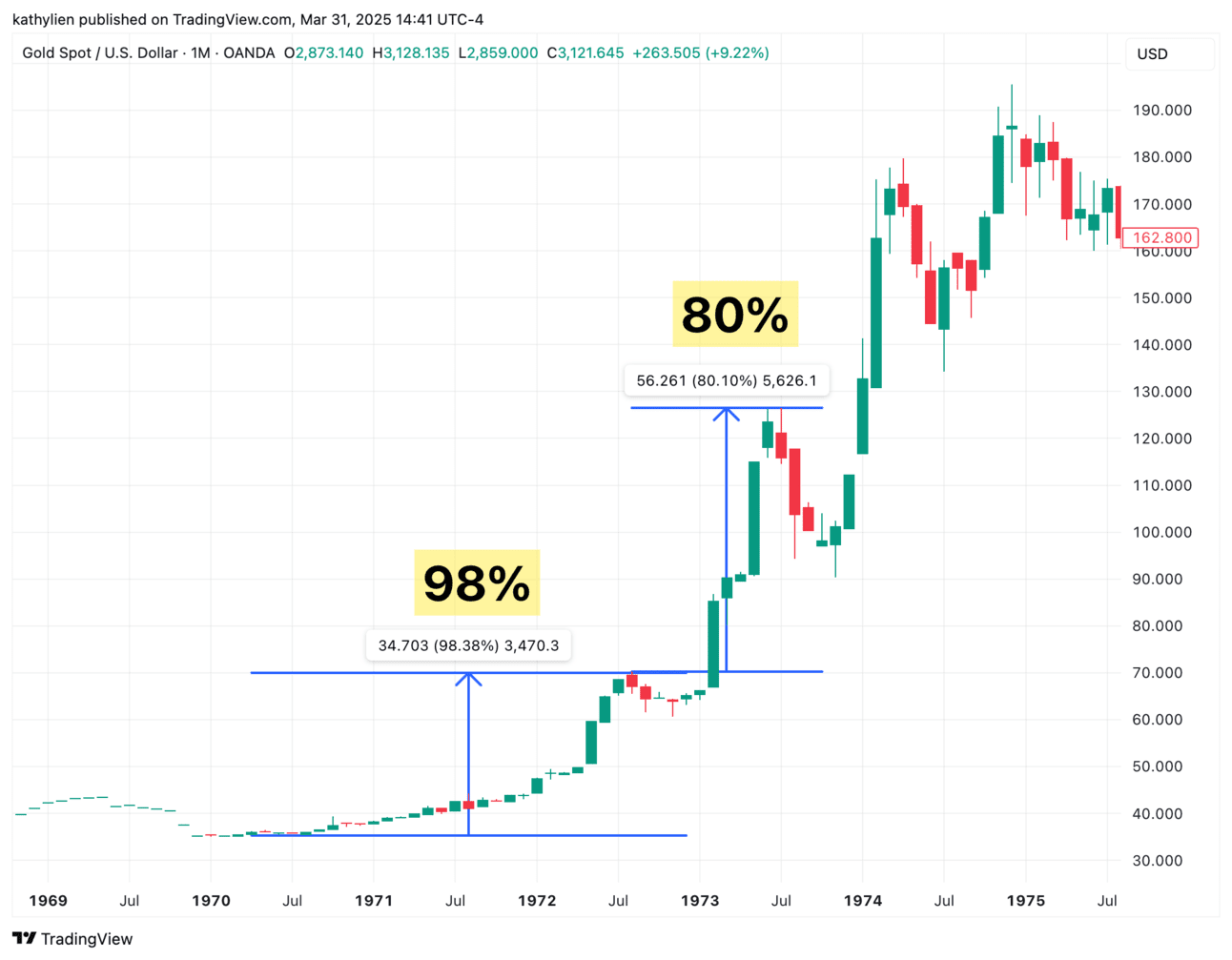Oklo stock tumbles as Financial Times scrutinizes valuation
A Red-Hot Start to the Year
Gold is on fire.
If you haven’t been watching the charts, you’re missing out on one of the strongest moves of the year. Since January, gold has surged nearly 20%, and traders everywhere are asking the same question: how high can it go from here?
Uncertainty Is Fueling the Rally
Geopolitical and economic turbulence has always played a pivotal role in pushing gold prices higher. When markets get shaky, gold shines—and that’s exactly what’s happening right now.
Tariff risks, falling confidence in the US dollar, and the potential for prolonged stagflation are driving investors into safe havens. With central banks, including the Federal Reserve, shifting toward a more dovish stance, lower interest rates are making gold even more attractive. When real yields fall, the opportunity cost of holding gold drops, encouraging even more demand.
What History Tells Us
Now, let’s be honest: a 2,000% return today would push gold well over $50,000, which is completely unrealistic. Even a 1,000% would take gold above $25,000, a stretch.
But based on historical trends, a more grounded projection might be $5,000. In the 1970s, gold had two major takeoff phases—first doubling between 1970 and 1972, pulling back and then rising another 80% between 1972 and 1973 before a more significant pullback (see chart below).

If we apply that same pattern to today’s base of $2,600, hitting $5,000 by year-end isn’t out of the question—especially if trade tensions escalate.
The 1970s vs. Today: A Striking Parallel
The conditions back then mirror today’s market in many ways. The breakdown of the Bretton Woods system, high inflation, and political unrest laid the groundwork for gold’s massive rally.
Now, inflation concerns, central bank interventions, trade wars, and geopolitical instability are creating a similar environment. Gold is once again the go-to hedge during uncertain times.
